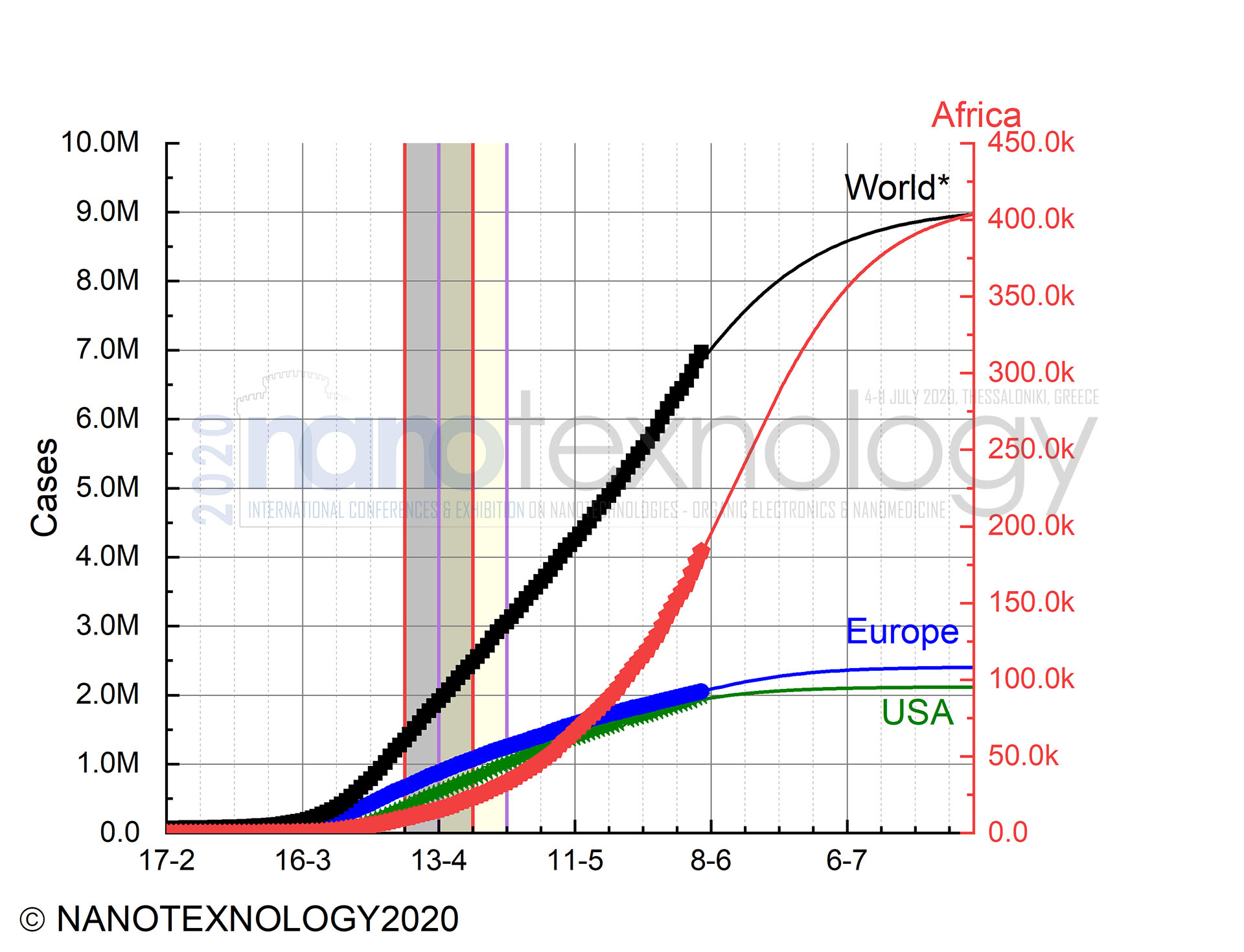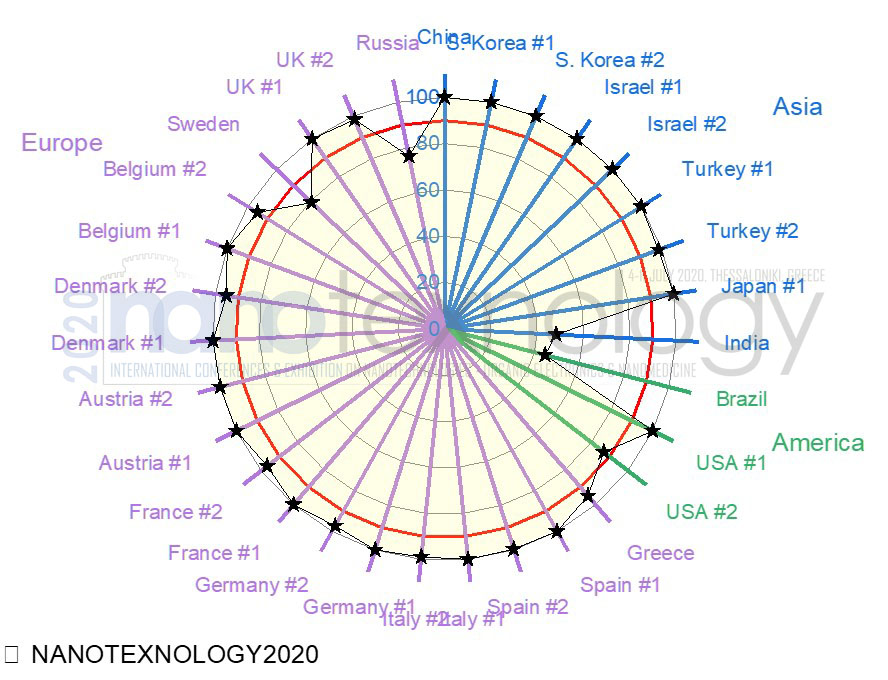
Predictions on COVID-19 evolution: Status Worldwide
Since the outbreak of this pandemic, and during the worldwide lockdown, the NANOTEXNOLOGY Organizing Committee and the Nanotechnology Lab LTFN at AUTh, are constantly and systematically monitoring and study the progress of the pandemic worldwide. We follow daily the published reports and statistics, and the measures implemented by the governments in order to limit the spread of the COVID-19 and to protect our health and to reduce the economic consequences.
We have described in our previous communications (see Study #1, Study #2 and Study #3), our predictions on the COVID-19 evolution, based on well documented S-curve and Gaussian modeling procedures on cumulative and daily data responsibly. Today these confirmed cases data and studies come from all geographical regions Europe, USA, S. America, Asia, Africa and Worldwide, and from many individual countries, providing the COVID-19 evolution status worldwide and the spread potential differences and delays between the continents.
We have pointed out several times that any measure for lifting parts of the lockdown or external cases, that will not be taken seriously into account in the country plans, will have a profound effect and returns on new infection cases, since this virus shows a tremendous spread potential. We have also emphasized that any such plans should be taken with extreme care and in accordance with a plan based on a trial and error approach. Nevertheless, we have seen in several countries all over the world, that they are facing new infection cases after COVID-19 second phase evolution during the last couple of weeks.
In general, according to these continuously updated predictions, it seems that most geographical areas in Asia, Europe (except Sweden), N. America are now close to the end of the second phase of infection cases, while S. America, Africa and countries such as Brazil and Russia are behind by one to two months. The figures below are shown the S-curves fitted results (solid red lines), providing also the time to reach the zero inflection cases, while in the insets are the corresponding derivatives (Gaussian fitted results), describing the evolution of total cases and the cases-per-day, respectively, and phase one and phase two potential and the COVID-19 evolution after them.
In this communication, we include some studies and predictions on geographical areas and countries of interest or group of countries with considerable interest, since they exhibit a late COVID-19 spread or an enormous spread again. We think that our results and predictions on the COVID-19 evolution could be used as a tool and as an example, to inform and help all people and governments in order to apply their specific plans or possibly to apply corrective approaches to limit and hopefully to eliminate the appearance of new cases.
We would like to have your feedback on these predictions that can help all of us to deal with this unprecedented situation with professionalism, and to help our colleagues and fellow citizens, both in the next door and across the globe.
A. Cases of South Korea, Israel and N. Makedonia: Increase of Confirmed Cases after second phase
South Korea, Israel and N. Macedonia have reached the confirmed cases plateau end (end of the second phase several weeks ago), as it is shown in Fig. 1. In these countries it is remarkable, that after several days from the second phase of COVID-19 spread, a new case is appeared.
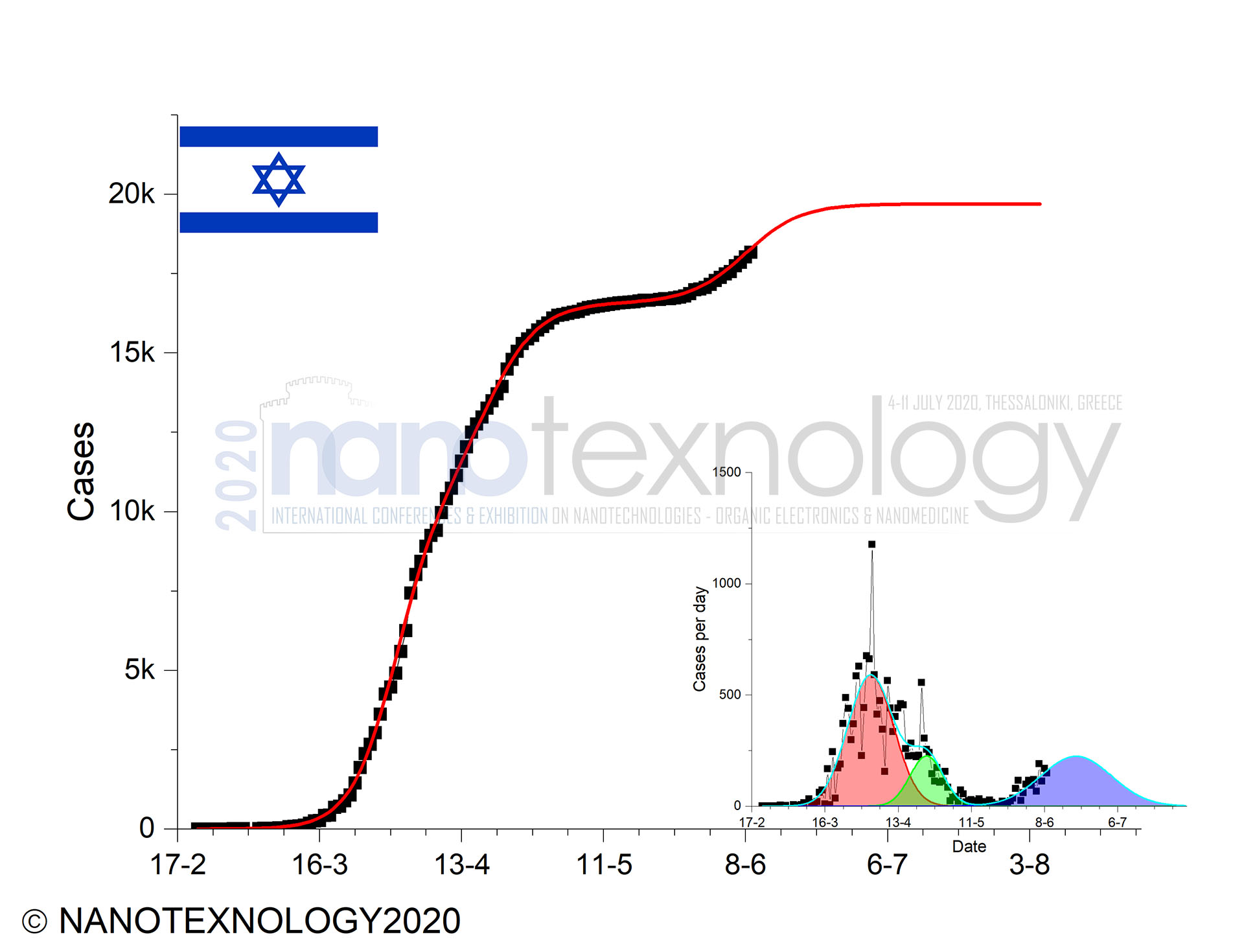 |
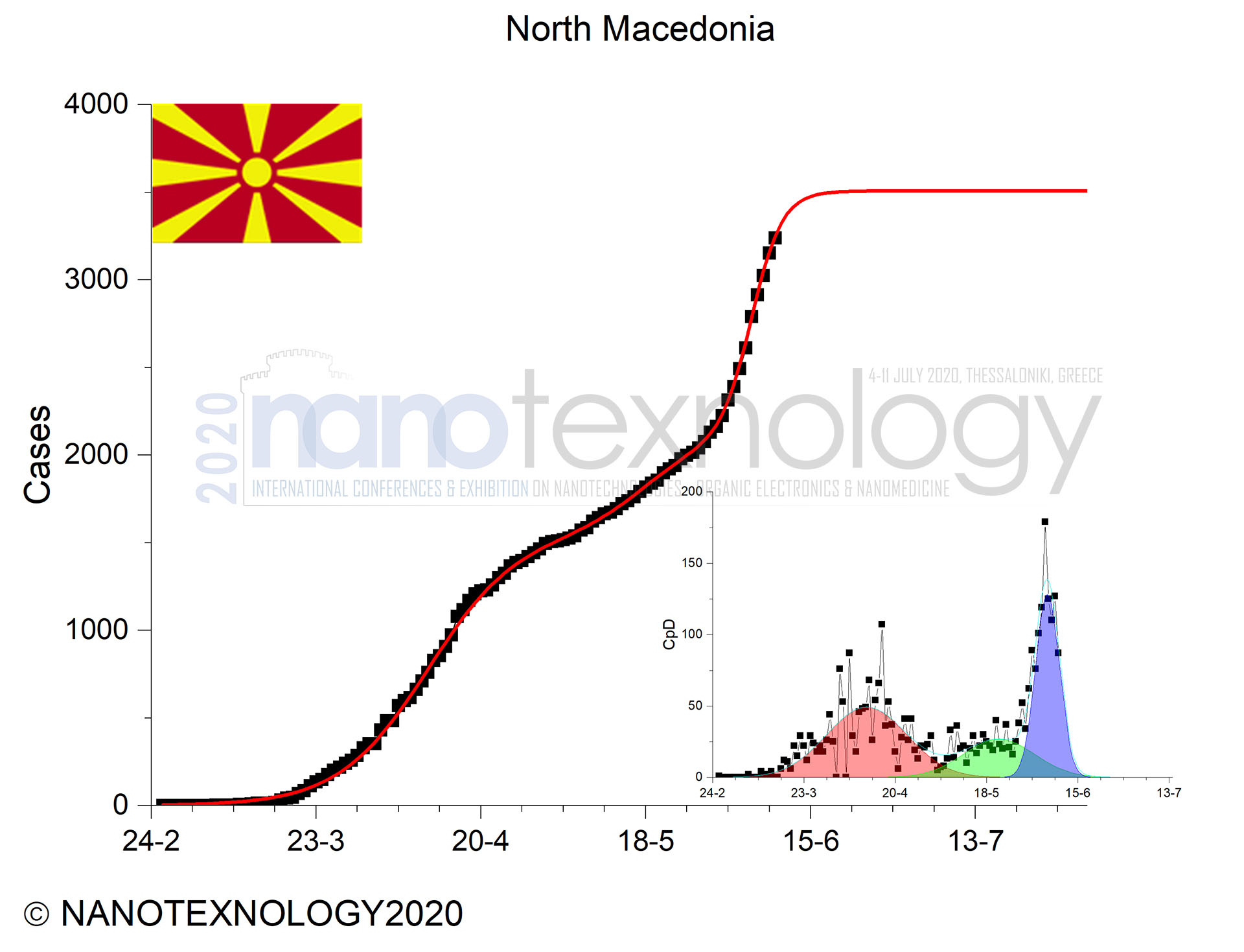 |
|
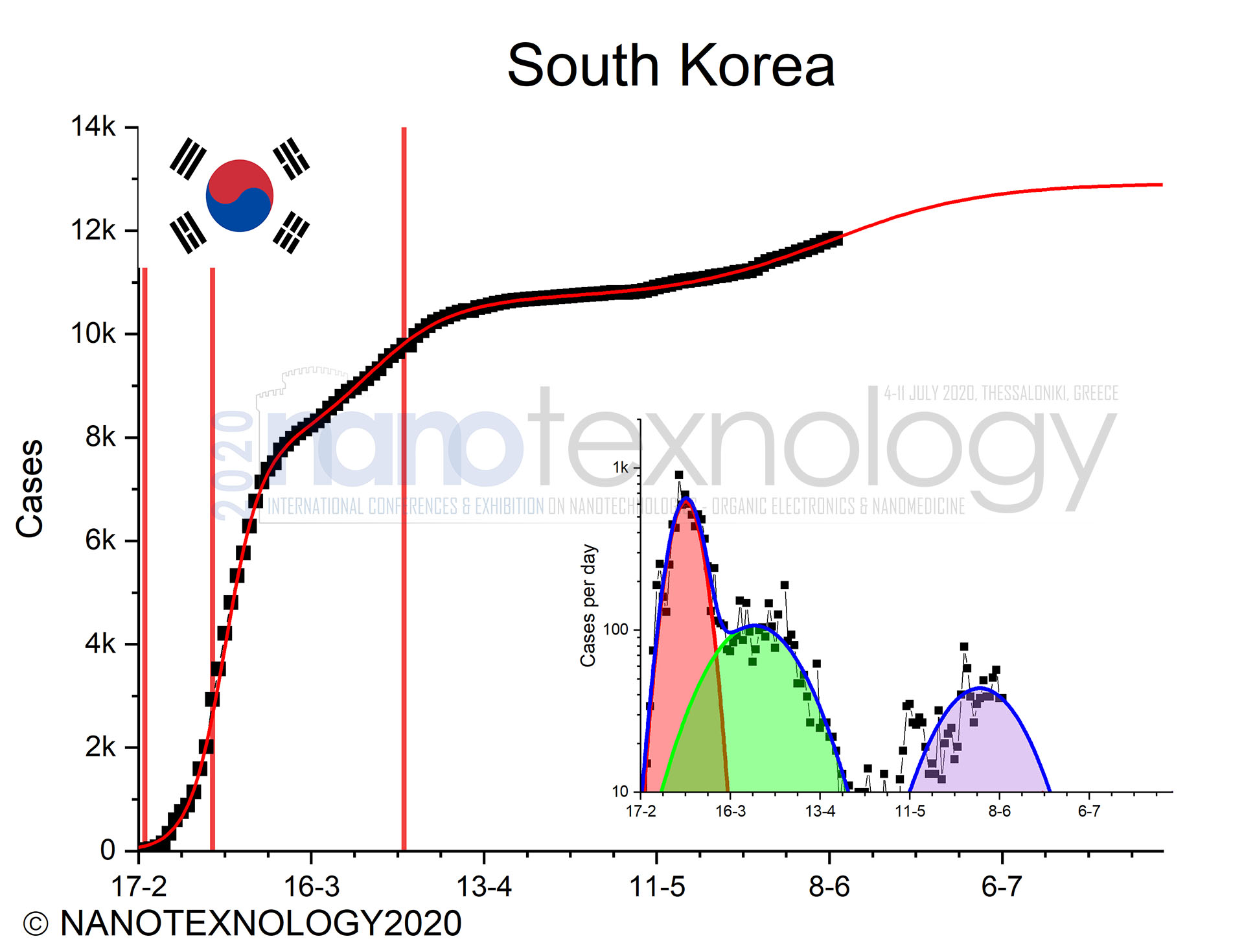 |
||
Figure 1: Israel, North Macedonia and South Korea COVID-19 Case Studies and the appearance of new cases after the second phase |
||
B. India, Brazil, Russia and Africa: Phase one Evolution
India, Brazil and Russia are still in phase one of the COVID-19 spread according to Fig. 2. Actually, all three countries entered late in phase one and they are far behind from the so-called plateau of the S-Curve. The same more or less situation occur in all African countries. In Fig.2 we also present the COVID-19 spread evolution in the Africa geographical area.
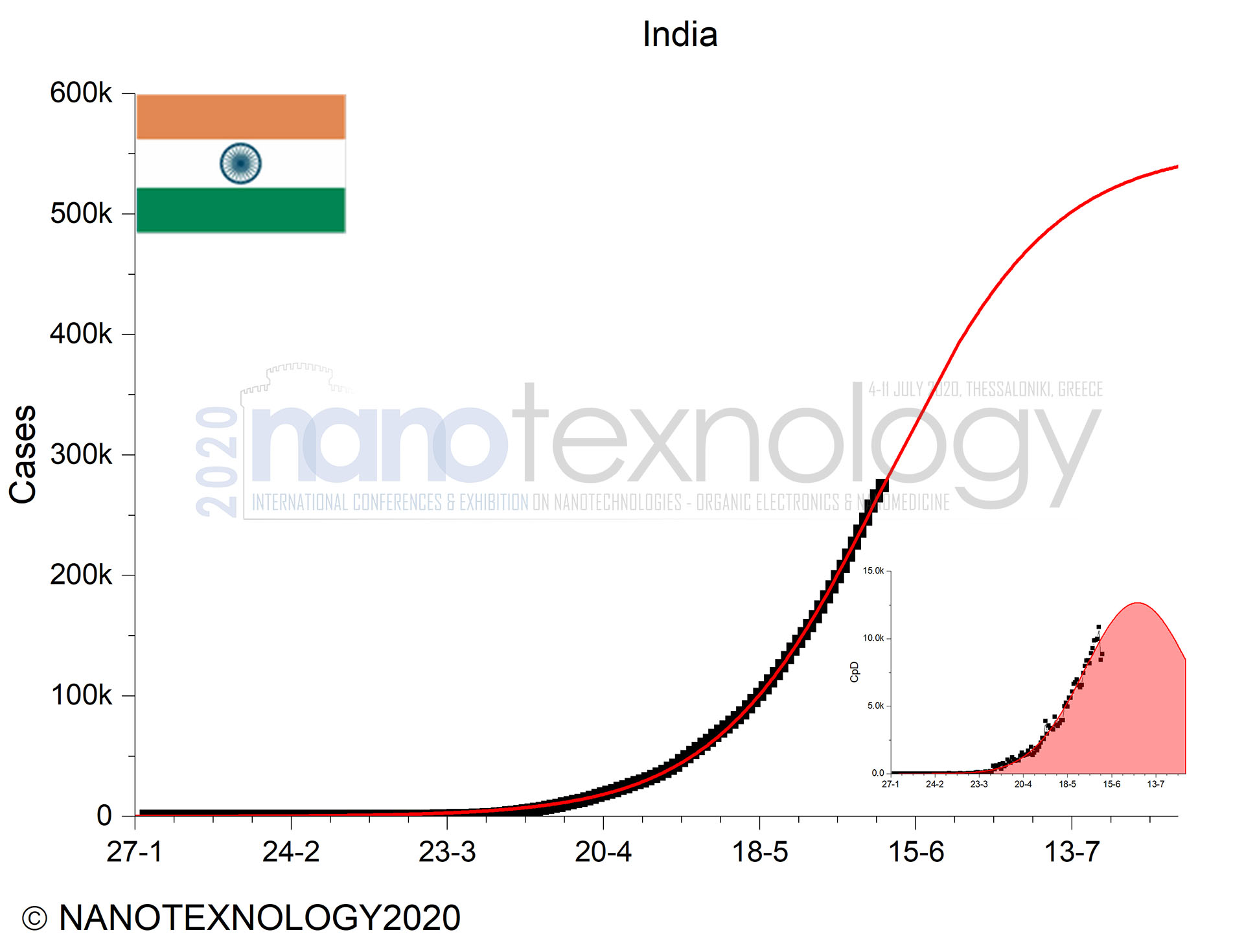 |
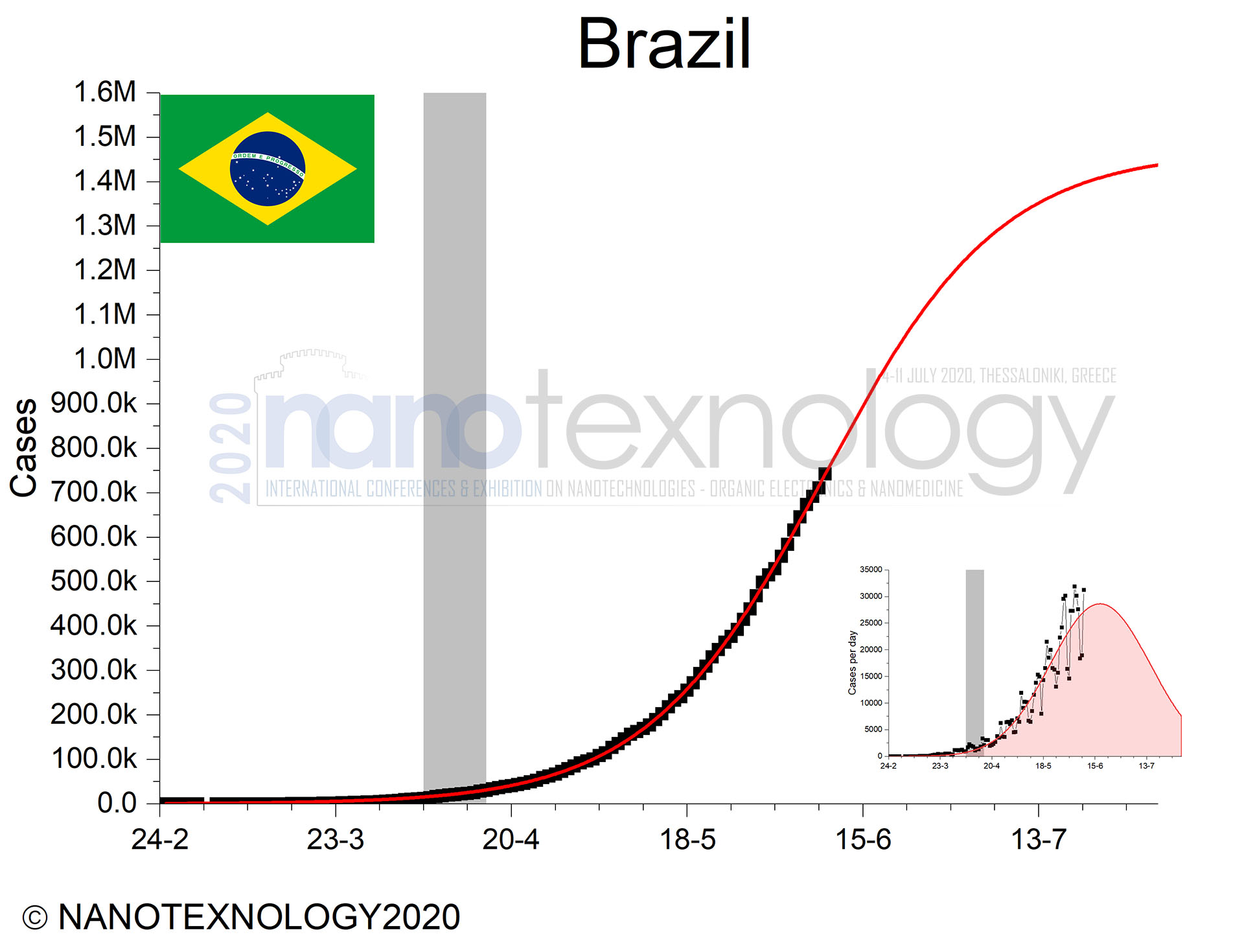 |
|
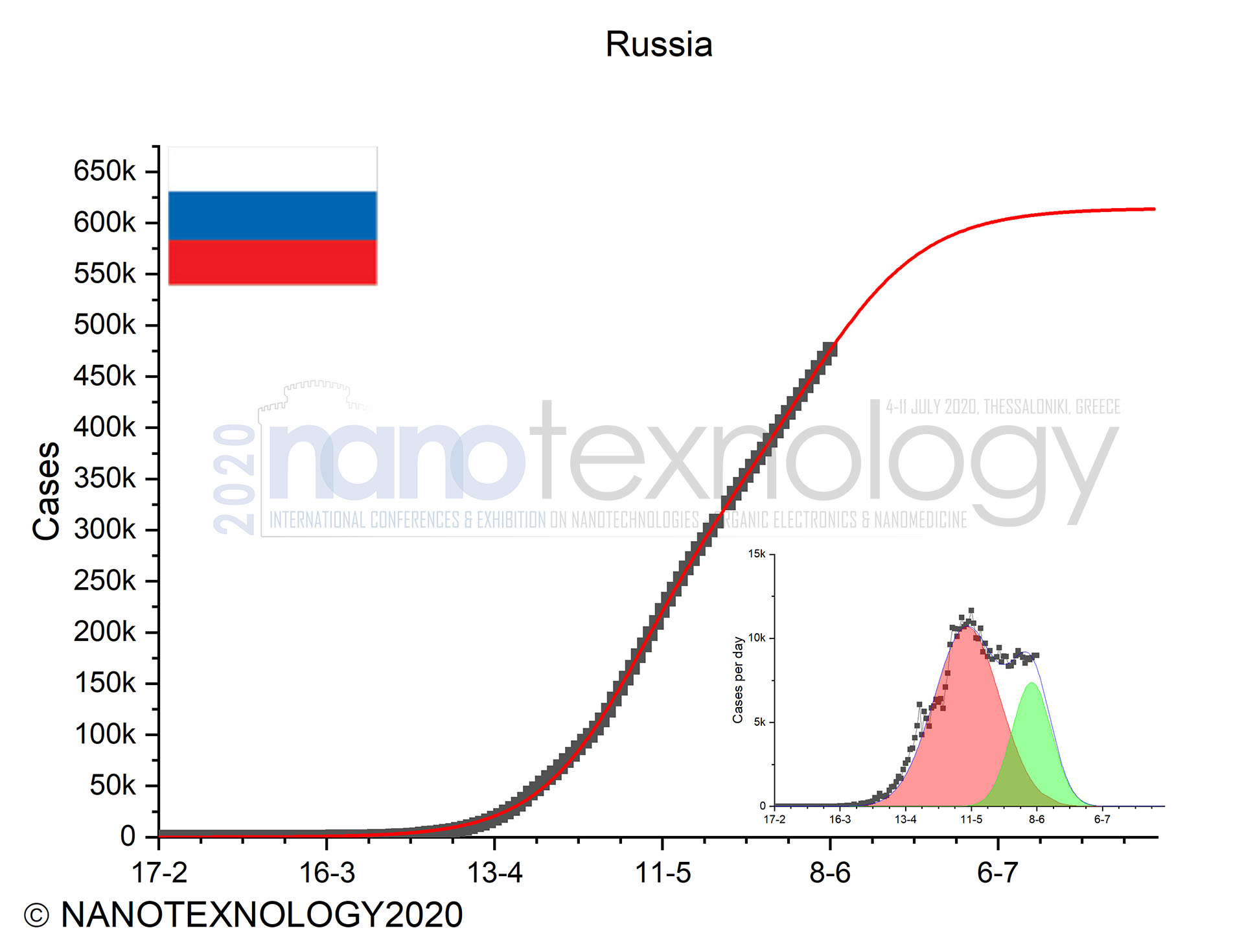 |
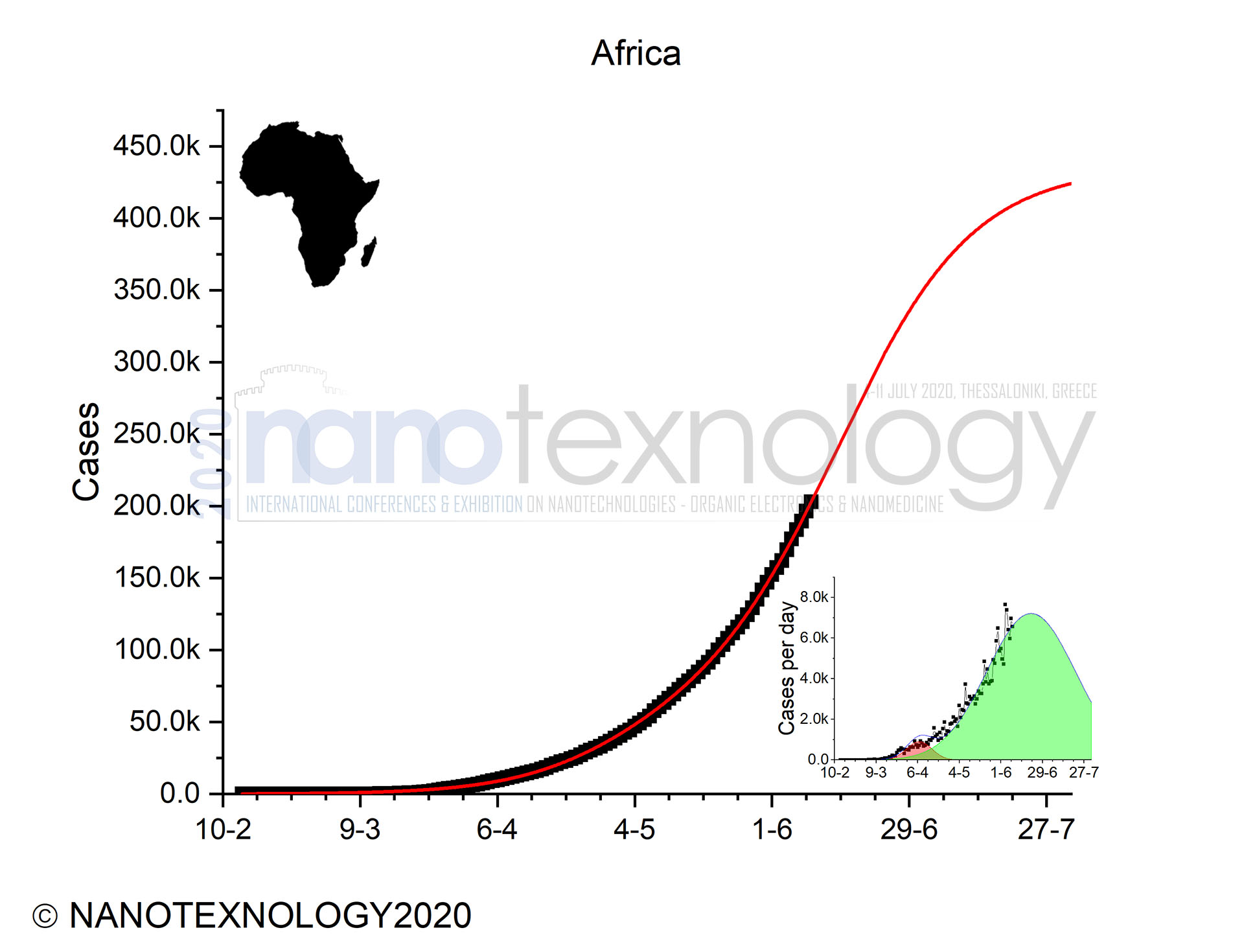 |
|
Figure 2: India, Brazil, Russia and Africa all geographical area COVID-19 evolution, is still in the phase one |
||
C. After lockdown period and at the end of second phase evolution
Most of European countries are now at the end of the second phase of COVID-19 spread evolution, as predicted by the S-curves in Fig. 3, with Austria to be at a well steady situation after the second phase for a month now.
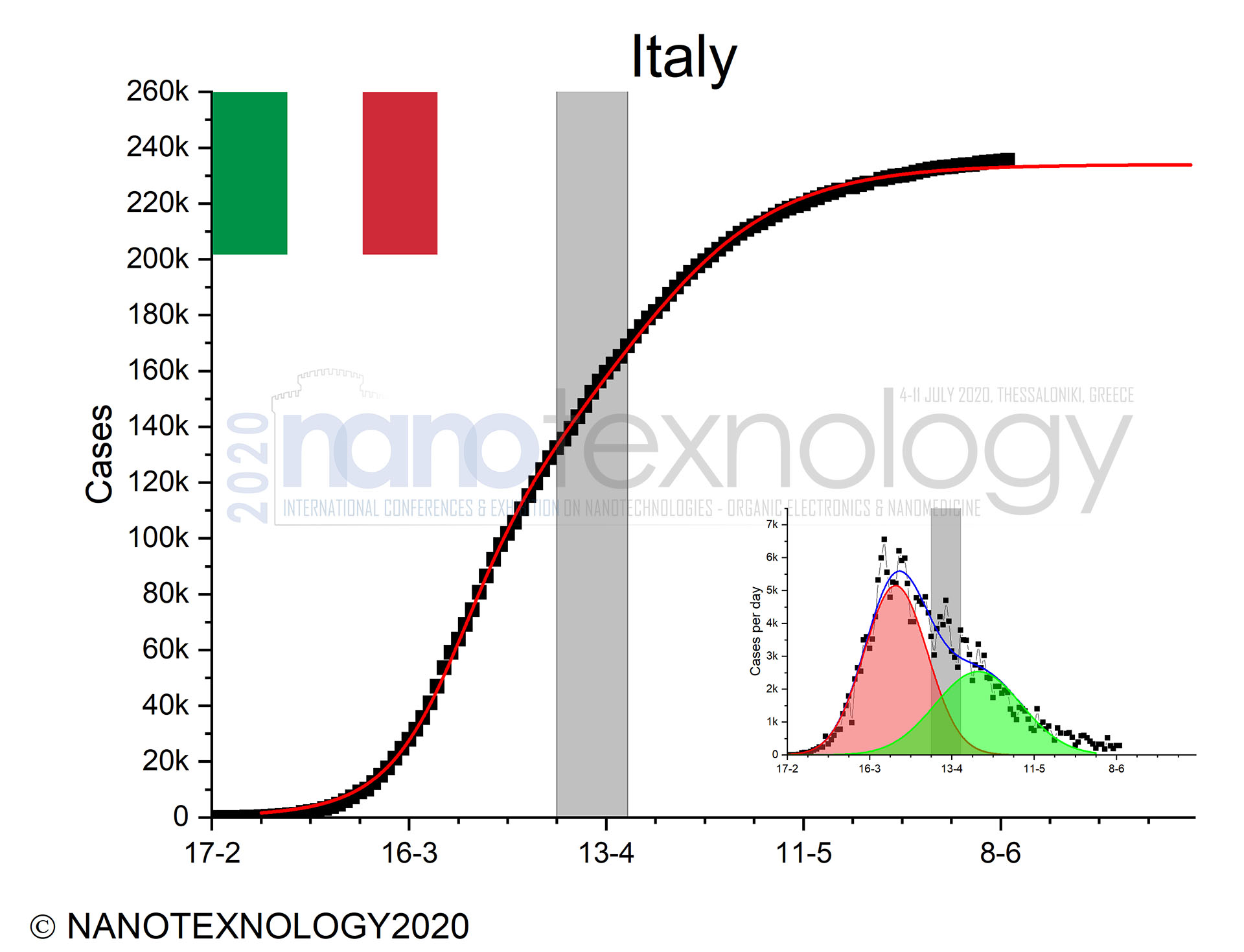 |
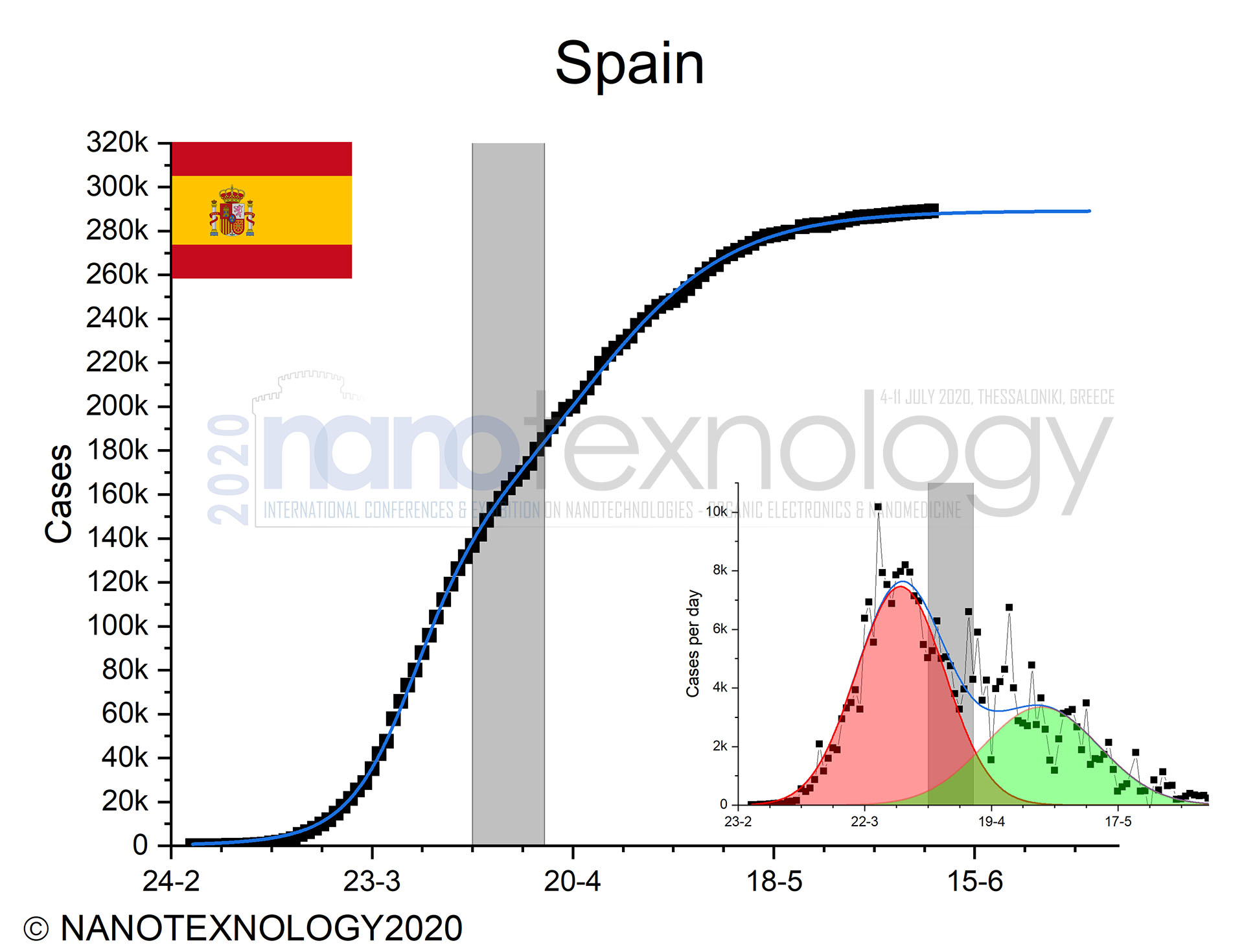 |
|
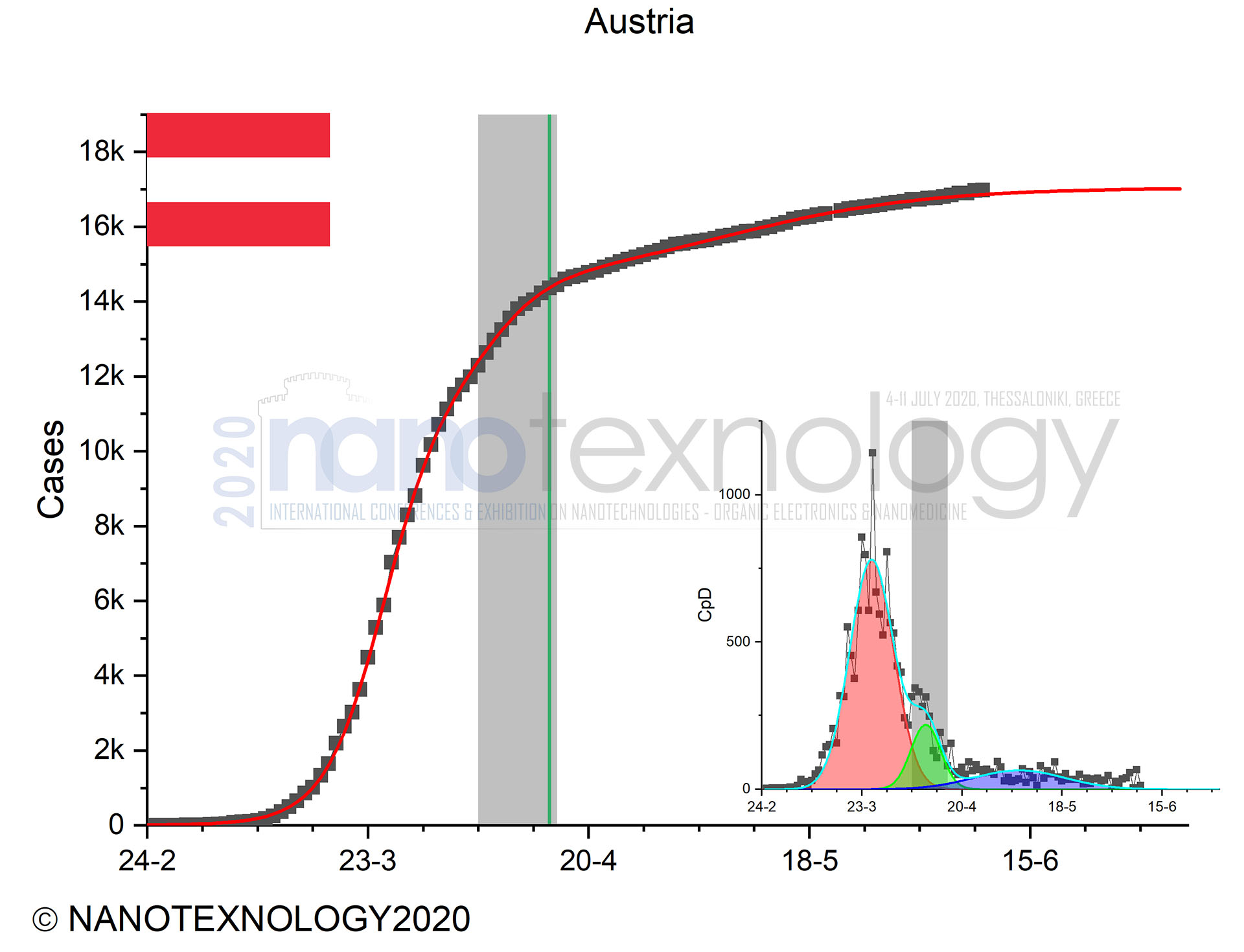 |
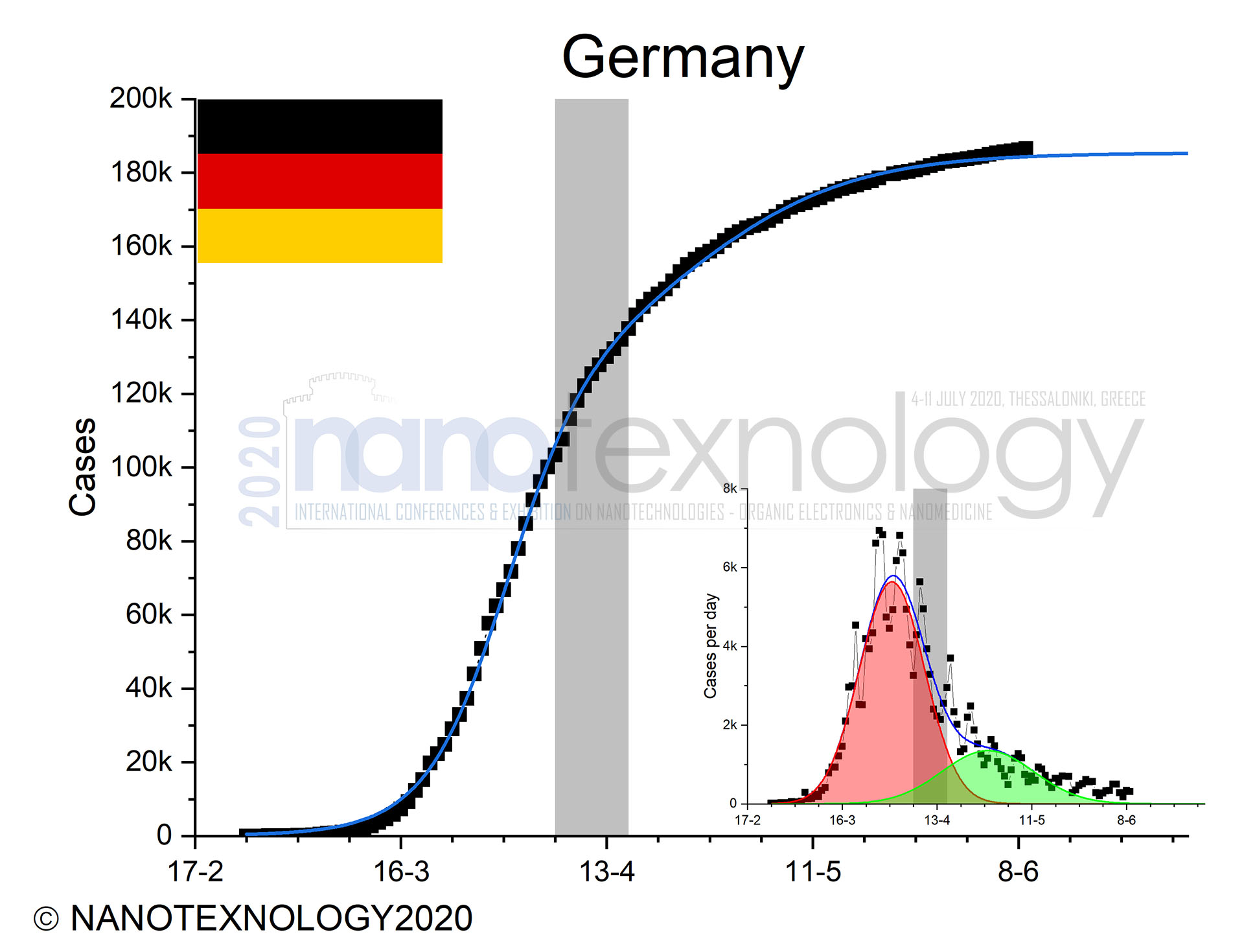 |
|
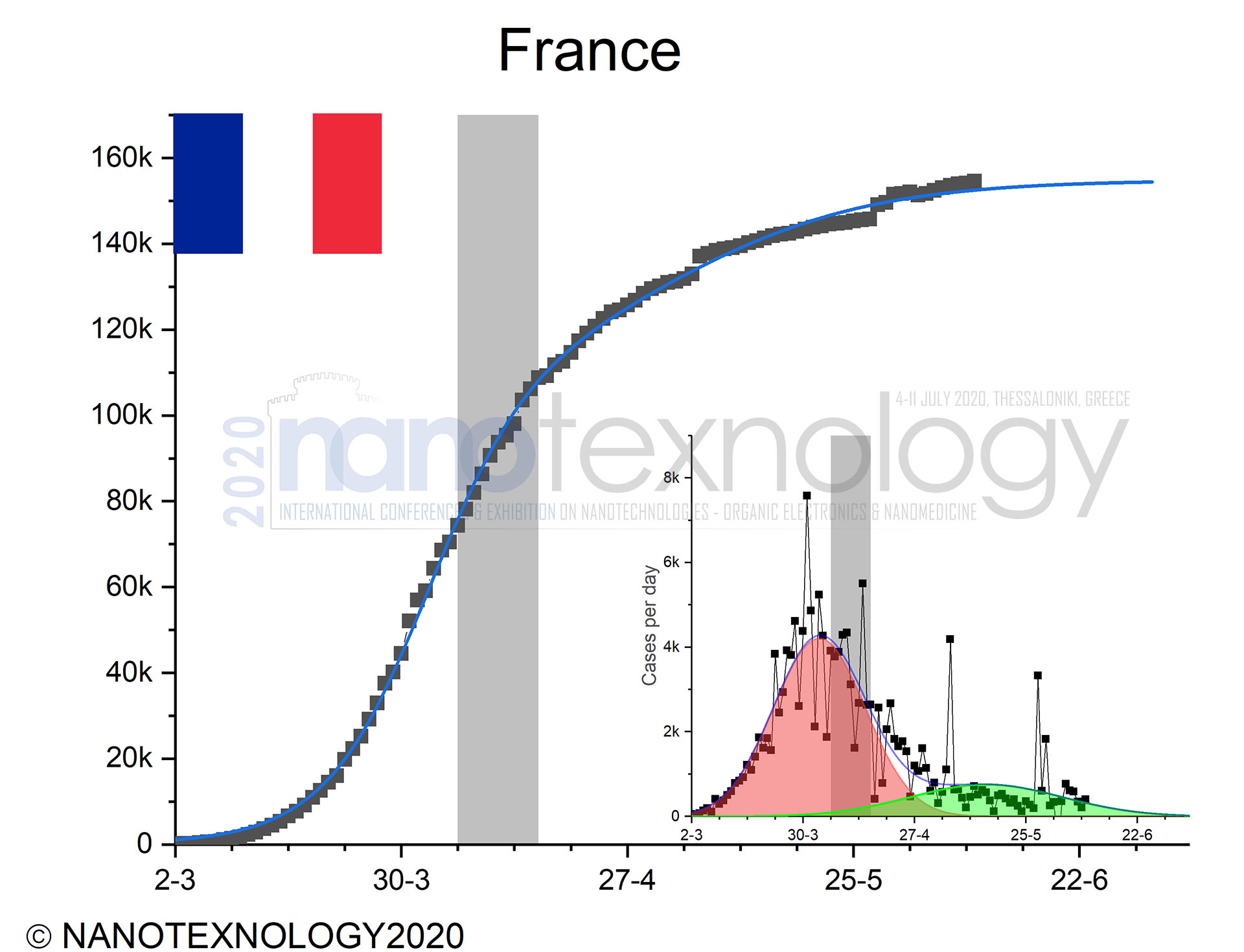 |
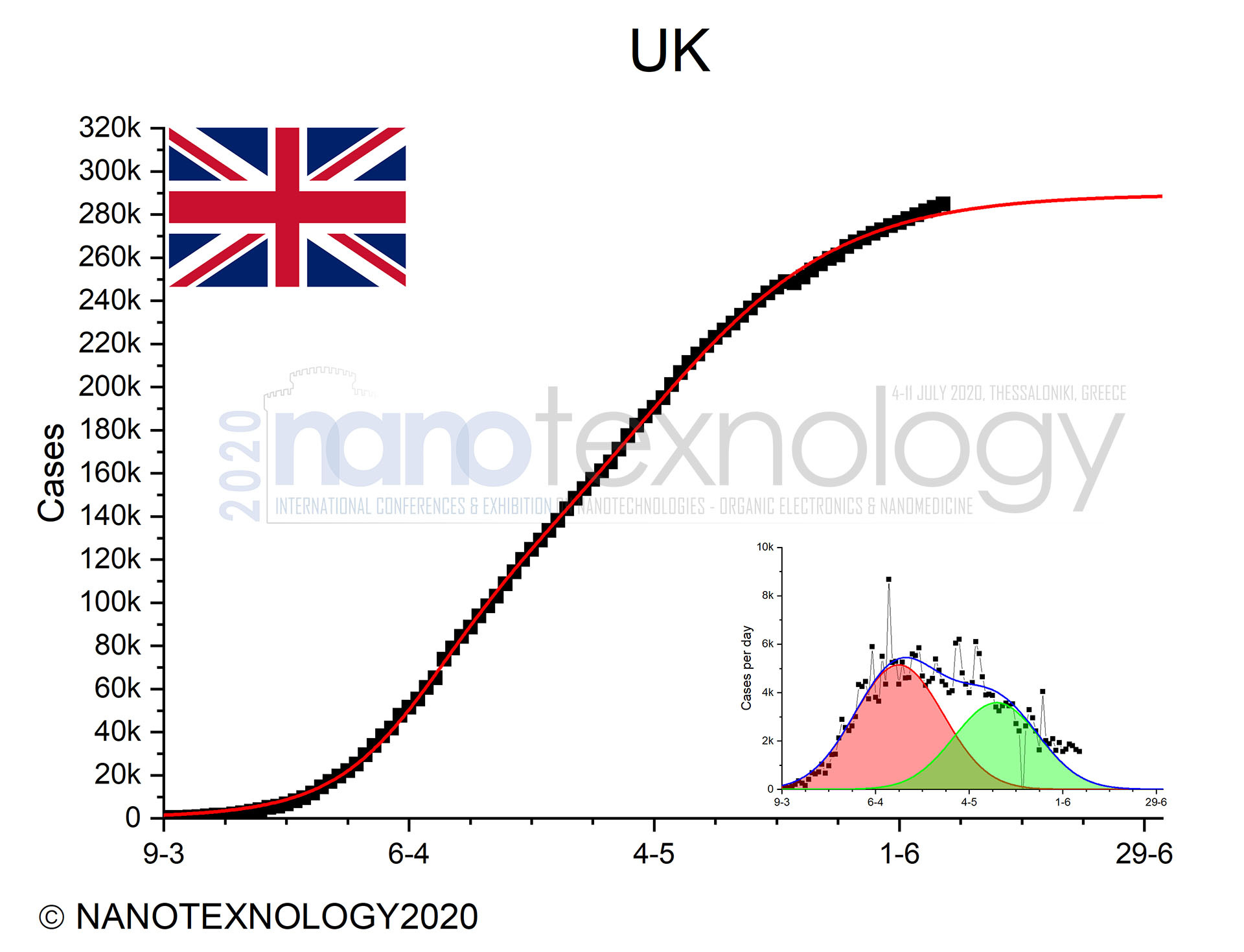 |
|
Figure 3: Study of COVID-19 cases in most European countries |
||
D. The case of Greece
Until today 3,068 cases have been reported. The Ministry of Health took all measures to delay the COVID-19 spread in the beginning of March and complete lockdown on 23rd of March. On 4th May (green vertical line in Fig. 3) the Greek government started reducing measures, entering in the second phase of COVID-19 evolution exhibiting a relatively small number of cases. However, at the previous 5 days, being also a public three day-off, the government withdrawn all lockdown restrictions, and as result the confirmed cases increased to about 15-25 cases per day, but now they have dropped again.
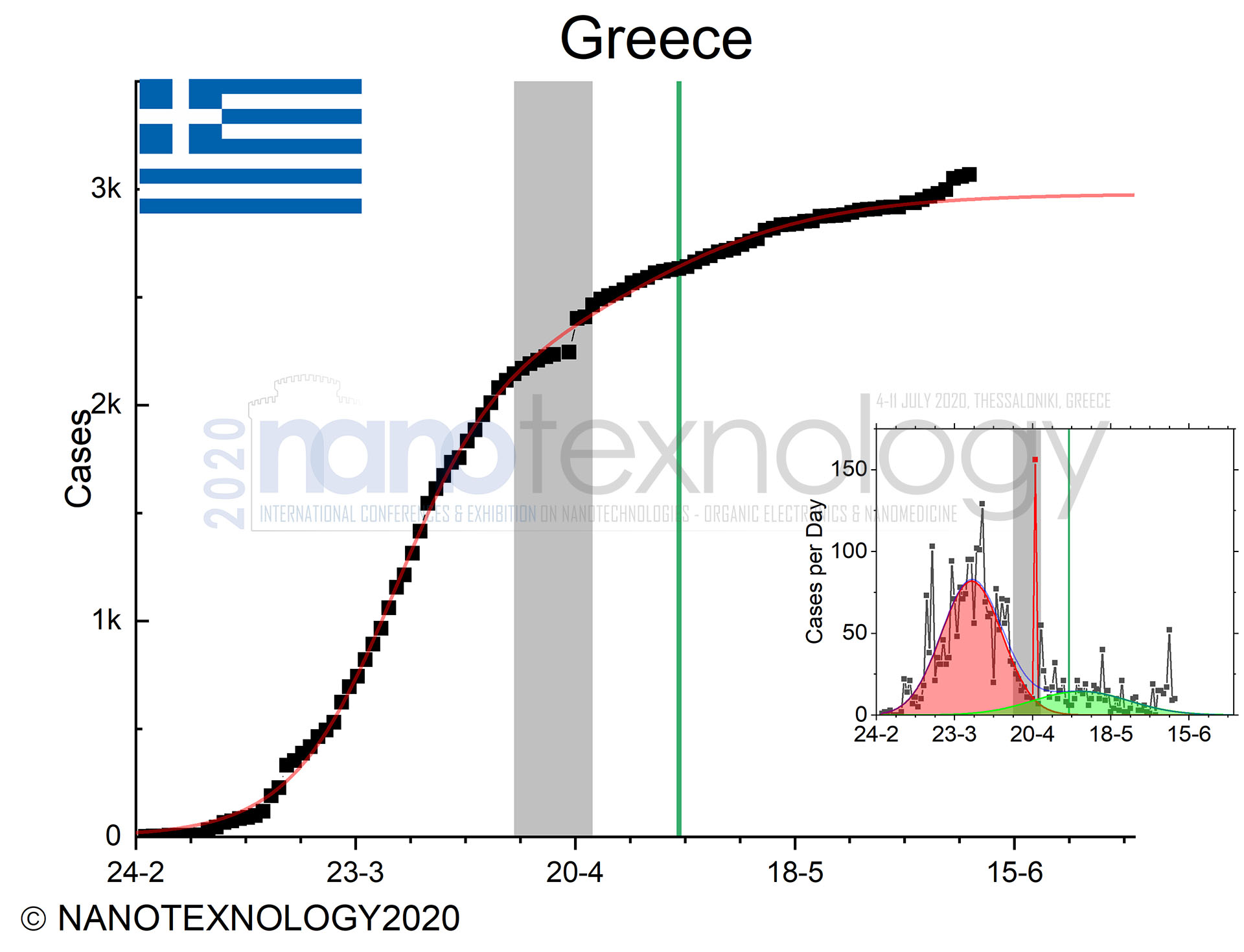 |
Figure 4: Study of COVID-19 spread in Greece |
E. Sweden and Denmark two different cases
Sweden and Denmark are another case study. These two countries showed a sharp peak in the very beginning of COVID-19 spread, and then both change plans (see Fig. 5). Especially Sweden, the only European country applied a different plan and control than the lockdown, seems to take measures per week in a trial an error approach, the last three months, and to have a long way to reach the S-curve plateau. On the other hand, Denmark ended lockdown very early and now is just at the end of second phase (according to Fig. 5).
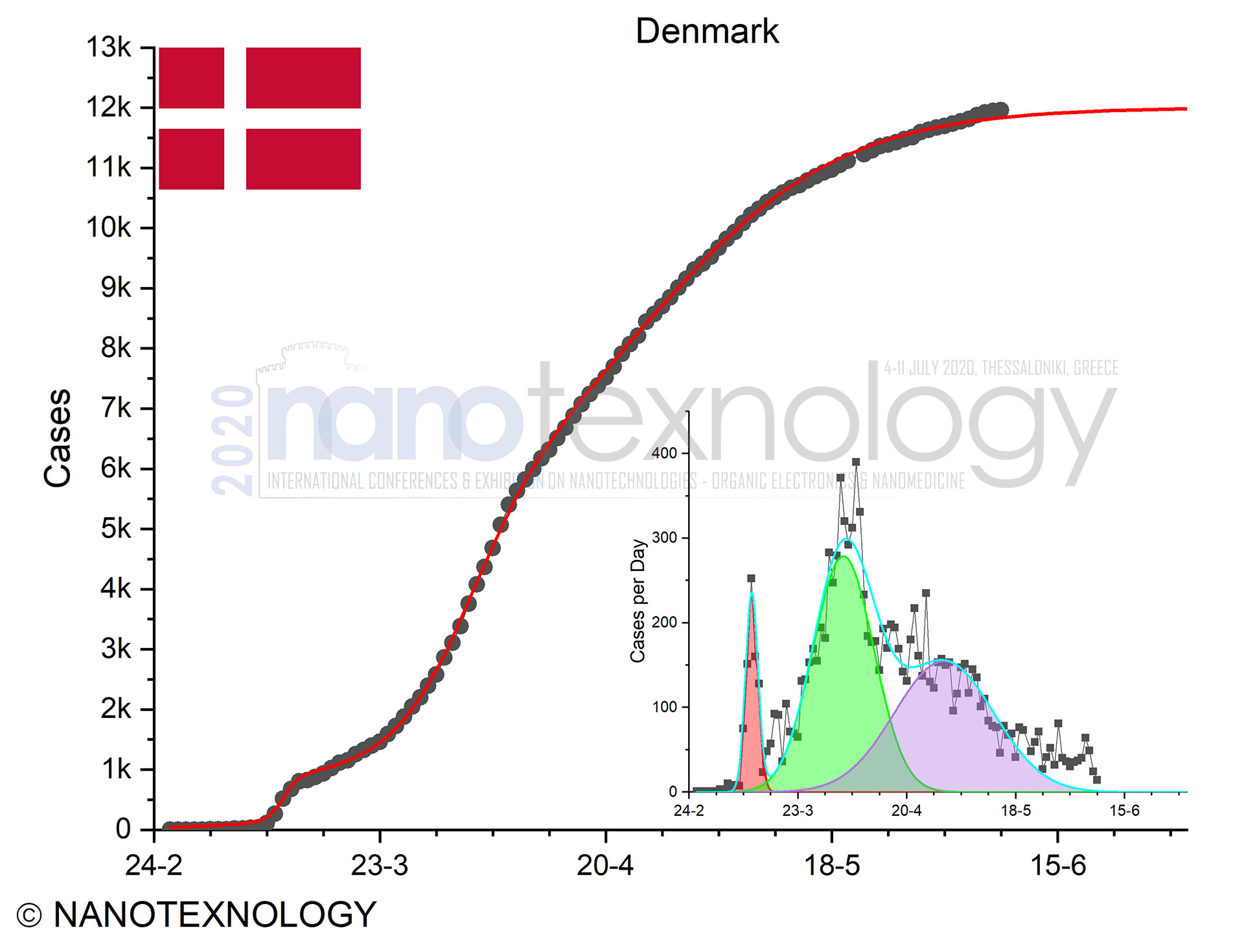 |
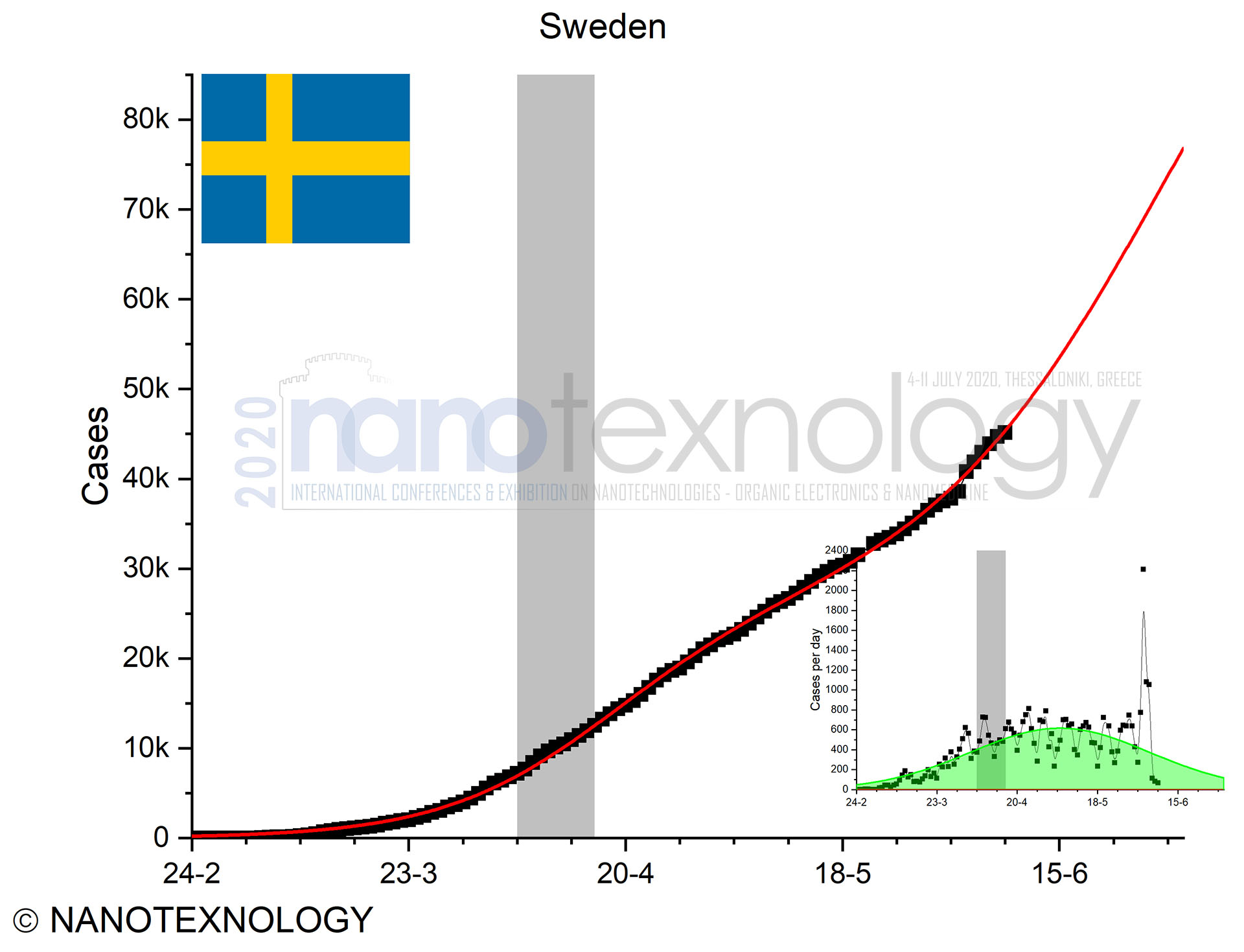 |
|
Figure 5: Total and daily confirmed cases from Denmark and Sweden, and the different approach applied from the two countries |
||
F. Worldwide, Europe, USA and Africa
Due to different reporting dates of the first case for each country we separated our study in different continents and countries as depicted in Fig. 6. Today (10th of June 2020), the confirmed cases for Europe, USA and Africa correspond to the 29%, 28% and 2.8% of World confirmed cases, respectively. Utilizing the S-curve formulation it is predicted that by the beginning of August the confirmed cases for Europe, USA and Africa are expected to reach above the 25% (increase the difference due to Russia, which just entered in phase two), 23% and 3.8% of the World’s confirmed cases, with S. America (e.g., Brazil in Fig 2 and 6b) and India (see Fig. 2 and 6b) to reach high values in July, and only in September to approach low confirmed cases.
Copyright © NANOTEXNOLOGY. All rights reserved.

